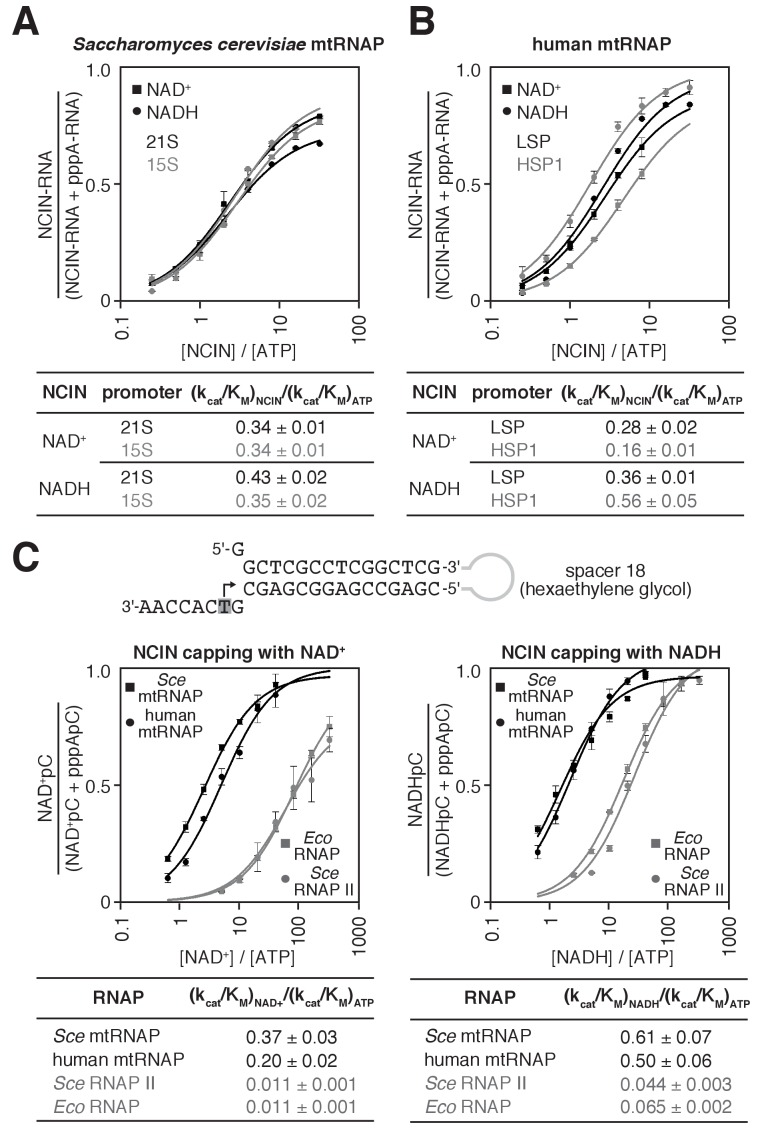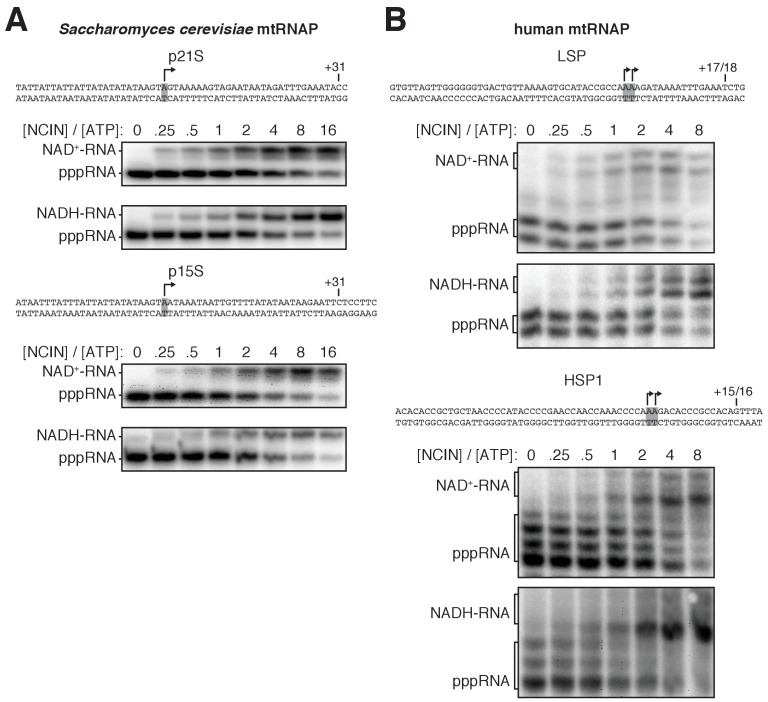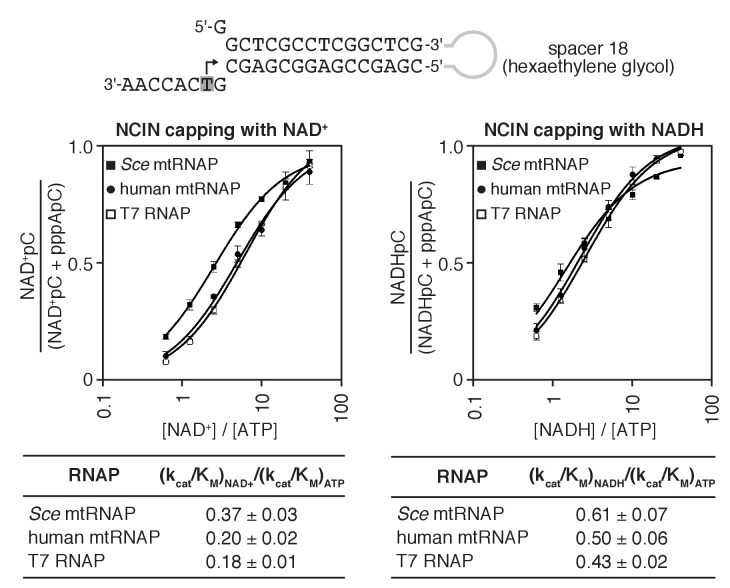Figure 2. S. cerevisiae and human mtRNAPs cap RNA with NAD+ and NADH more efficiently than bacterial and nuclear RNAPs.
(A and B) Dependence of NCIN-mediated capping with NAD+ and NADH on [NCIN] / [ATP] ratio for S. cerevisiae mtRNAP (A) and human mtRNAP (B) (mean ± SD; n = 3). DNA templates and representative data are shown in Figure 2—figure supplement 1. (C) Dependence of NCIN-mediated capping with NAD+ and NADH on [NCIN] / [ATP] ratio for mtRNAPs vs. E. coli RNAP and S. cerevisiae RNAP II. Top, tailed template. Grey box and arrow indicate TSS. Bottom, dependence of NCIN-mediated capping with NAD+ and NADH on [NCIN] / [ATP] ratio for S. cerevisiae mtRNAP (Sce mtRNAP), human mtRNAP, E. coli RNAP (Eco RNAP) and S. cerevisiae RNAP II (Sce RNAP II) (mean ± SD; n = 3).



